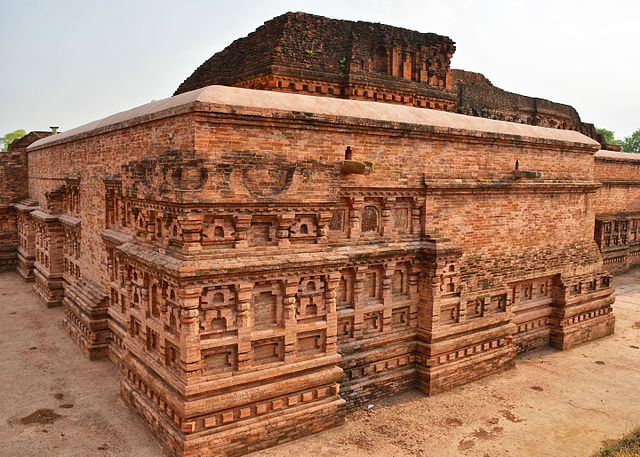Shantideva (ca. 685-763; sometimes spelled Santideva) is best known as the author of the Bodhisattvacharyavatara, or The Way of the Bodhisattva. This accomplishment marks him as one of the patriarchs of Mahayana Buddhism. He was also the author of a lesser-known work, the Siksasamuccaya (“Training Anthology”).
For all of his importance to Mahayana Buddhism, however, we don’t know that much about him. The biographies written over the centuries probably are made up of folktales. But here is his standard biography.
Shantideva’s Story
Shantideva was said to have been a crown prince of a kingdom in what is now the western Indian state of Gujarat. The night before his coronation, Manjusri Bodhisattva came to him in a dream and told him to renounce his throne and instead dedicate himself to seeking enlightenment.
In another version of this story, on the night before his coronation Shantideva’s mother gave him a ceremonial bath in scalding water. When he complained, she said, “My son, this is nothing compared to the pain of being king.” After the bath, the prince departed.
After renouncing his throne the former prince lived for a time as a wandering mendicant. In time he came to the great learning center at Nalanda. He was ordained as a monk at Nalanda and given the name Shantideva, which means “god of peace.”
At Nalanda, Shantideva came across as a slacker. No one ever saw him study. He didn’t show up for practice debates. He was called “Three Realizations” because, it was assumed, his only activities were eating, sleeping and defecating.
It would not do to harbor such a do-nothing at Nalanda. The great monastery depended on the support of wealthy patrons to survive. In return, the patrons expected the monks to study and teach the dharma. If the patrons learned their donations were supporting the likes of Shantideva, they might withhold support.
So he had to go. Or else he had to be shamed into getting down to work. But how could that be accomplished?
It was decided to invite Shantideva to present a teaching to the entire university. This was a great honor usually given to the most accomplished students. He was to give his talk while sitting on a throne, which in some versions of the story was placed on a high platform without any stairs, to make him struggle to get to his seat.
On the day of the talk, Shantideva entered the great hall and made three prostrations to the throne. Then he effortlessly seated himself, to the astonishment of the audience.
Then he asked, “Should I teach you something that other monks have already presented? Or would you like to hear something new?” The audience called for the new teaching.
“Very well,” Shantideva said. And he proceeded to recite the verses of the Bodhisattvacharyavatara. These verses described the power of bodhicitta and how to cultivate it. They reviewed the Six Perfections and explained how the perfections also opened the heart to bodhicitta.
When his talk reached the sixth perfection, the Perfection of Wisdom, Shantideva began to rise into the air. He floated higher and higher, until the assembly only heard his voice but no longer saw him. Then his voice faded as well, and he entirely disappeared from Nalanda, never to return. In some versions of the story he is said to have returned to the life of a wandering mendicant.
